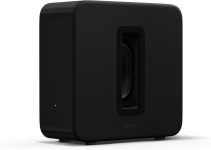
Sonos Sub 4 – Wireless Subwoofer – Black Review subwoofers – Oemiu
Sonos Sub (Gen 3) Review: Adding Depth and Impact to Your Home Theater
For many, a home theater setup isn’t truly complete until you can feel the action, not just hear it. The rumble of an explosion, the subtle vibrations of a cello, the deep thrum of a spaceship engine – these are the elements that elevate the viewing and listening experience from passive observation to immersive engagement. This is where a dedicated subwoofer, especially a wireless subwoofer like the Sonos Sub (Gen 3), steps in. Sonos has long been a leader in wireless audio, known for its seamless multi-room capabilities and user-friendly interface. The Sub (Gen 3), often referred to as just the Sonos Sub, aims to bring that same ease of use and elegant design to the often-intimidating world of bass amplification. But does it live up to the hype? Does its performance justify its premium price tag? We’ll dive deep into the Sub (Gen 3)’s design, features, performance, and overall value to help you decide if it’s the right low-frequency addition to your Sonos ecosystem. Forget just hearing your music; let’s explore how the Sonos Sub enables you to *feel* it.
Unboxing and Design: A Statement Piece That Disappears
The Sonos Sub arrives in packaging that’s as thoughtfully designed as the product itself. The unboxing experience feels premium, a sign of the attention to detail that Sonos is known for. Inside, you’ll find the Sub itself, a power cord, and minimal documentation. Sonos keeps the setup process remarkably simple, relying on their app for guided installation. No complicated wiring diagrams or confusing manuals here.
The design of the Sub (Gen 3) is both striking and understated. Its iconic, sculpted shape is instantly recognizable, yet it blends seamlessly into most home environments. Available in black or white, the Sub’s glossy finish exudes quality. The central cutout isn’t just aesthetic; it’s a crucial part of the acoustic design, minimizing vibrations and optimizing sound dispersion. The internal components are neatly arranged to maximize space and efficiency, contributing to the Sub’s relatively compact size despite its powerful performance. Its dimensions are approximately 15.3 inches tall, 6.2 inches wide, and 15.8 inches deep, making it easy to tuck away in a corner or position discreetly behind furniture.
Unlike traditional subwoofers with visible drivers and ports, the Sonos Sub keeps everything hidden. This minimalist approach contributes to its elegant appearance and prevents accidental damage to the internal components. The dual force-canceling drivers face inwards, eliminating cabinet rattle and ensuring that all the energy is directed towards producing clean, powerful bass. This innovative design allows the Sub to deliver impressive low-frequency performance without unwanted distortion or vibrations. The lack of exposed drivers also makes it more pet and child-friendly, reducing the risk of damage or injury.
Setup and Integration: Seamless Wireless Connectivity
Sonos has built its reputation on ease of use, and the Sub (Gen 3) is no exception. The setup process is remarkably straightforward, guided entirely through the Sonos app. After plugging in the power cord, the app prompts you to add the Sub to your existing Sonos system. The app searches for the Sub, connects it to your Wi-Fi network, and then guides you through a simple tuning process to optimize the sound for your room. This typically involves playing a test tone and allowing the Sub to automatically adjust its settings based on the room’s acoustics.
The beauty of the Sonos ecosystem is its seamless integration. Once the Sub is connected, it automatically pairs with your existing Sonos speakers, such as the Arc, Beam, Playbar, or even smaller speakers like the One or Five. The app allows you to adjust the Sub’s level, phase, and crossover frequency to perfectly match your other speakers and your personal preferences. You can also use the Sonos app to create custom EQ settings for different listening scenarios, such as movies, music, or gaming. The Sub automatically adjusts its performance based on the selected audio source, ensuring optimal bass response for any content.
One of the key advantages of the Sonos Sub is its wireless connectivity. Unlike traditional subwoofers that require a dedicated cable connection to your receiver or amplifier, the Sub connects wirelessly to your Sonos system via Wi-Fi. This eliminates the need for unsightly cables and allows you to place the Sub virtually anywhere in your room. The wireless connection is reliable and stable, providing a consistent and lag-free audio experience. The lack of wires also makes it easy to move the Sub around the room to experiment with different placements and find the optimal position for bass response.
However, it’s worth noting that the Sub requires a Wi-Fi connection to function. If your Wi-Fi network is unreliable or prone to dropouts, you may experience occasional audio interruptions. In such cases, you can consider using a wired Ethernet connection to the Sub for a more stable connection. Sonos also offers its own proprietary wireless network, SonosNet, which can be used to create a dedicated wireless network for your Sonos speakers, further improving reliability and performance.
Performance and Sound Quality: Deep Bass That You Can Feel
The Sonos Sub is designed to deliver deep, impactful bass that enhances the overall audio experience. It achieves this through a combination of innovative design, powerful amplification, and precise digital signal processing. The dual force-canceling drivers, coupled with the acoustic architecture, work together to produce clean, distortion-free bass even at high volumes. The Sub extends the low-frequency response of your Sonos speakers, adding depth and dimension to your music and movies.
In terms of performance, the Sonos Sub excels at reproducing low-frequency sounds with accuracy and authority. It can handle everything from the subtle rumble of a distant explosion to the deep thumping of a dance track with ease. The Sub’s ability to reproduce these sounds without distortion or coloration is a testament to its high-quality components and sophisticated design. The bass is tight, controlled, and well-defined, avoiding the muddiness or boominess that can plague lesser subwoofers.
When paired with the Sonos Arc soundbar, the Sub creates a truly immersive home theater experience. The Sub adds a significant amount of low-end impact to movie soundtracks, making explosions, car chases, and other action sequences feel more visceral and engaging. The Sub also enhances the clarity and detail of the dialogue, allowing you to hear every word clearly even during loud or complex scenes. The combination of the Arc’s wide soundstage and the Sub’s deep bass creates a convincing surround sound effect, without the need for multiple speakers and complicated wiring.
For music lovers, the Sonos Sub elevates the listening experience to a new level. It adds depth and richness to your favorite tracks, bringing out the subtle nuances in the bass lines and drum beats. The Sub is particularly effective at reproducing the low-frequency content in genres such as electronic music, hip-hop, and rock. The Sub also enhances the overall balance of the sound, allowing you to hear all the instruments and vocals clearly and distinctly. Whether you’re listening to classical music or heavy metal, the Sonos Sub will add a new dimension to your listening experience. The enhanced bass response elevates everything from a solo acoustic guitar to a full orchestral arrangement. As a high-end subwoofer, it’s a serious investment, but the return on investment for those who appreciate deep, clean bass is substantial.
Comparing the Sonos Sub to Alternatives: Is It Worth the Premium?
The Sonos Sub occupies a unique position in the subwoofer market. It’s a premium product with a premium price tag, but it also offers a level of integration and ease of use that is unmatched by many of its competitors. When considering whether to purchase the Sonos Sub, it’s important to compare it to other options in terms of performance, features, and price.
One of the most common alternatives to the Sonos Sub is a traditional wired subwoofer from brands like SVS, REL, or Klipsch. These subwoofers often offer comparable or even superior performance to the Sonos Sub, particularly in terms of raw power and low-frequency extension. However, they also require a dedicated amplifier or receiver and a wired connection, which can be less convenient for some users.
Another alternative is a wireless subwoofer from other manufacturers, such as Bose or Samsung. These subwoofers offer similar wireless connectivity to the Sonos Sub, but they may not integrate as seamlessly with other Sonos speakers or offer the same level of app control. They also might not offer the same force-cancelling technology as the Sonos sub, resulting in cabinet vibrations.
Ultimately, the best subwoofer for you will depend on your specific needs and priorities. If you prioritize ease of use, seamless integration with other Sonos speakers, and a clean, minimalist design, the Sonos Sub is an excellent choice. If you prioritize raw power and low-frequency extension and are willing to deal with the added complexity of a wired connection, a traditional wired subwoofer may be a better option.
Here’s a table comparing the Sonos Sub (Gen 3) to some potential alternatives:
| Feature | Sonos Sub (Gen 3) | SVS SB-1000 Pro | Bose Bass Module 700 |
|---|---|---|---|
| Type | Wireless | Wired | Wireless |
| Connectivity | Wi-Fi, Ethernet | RCA, LFE | Wireless |
| Driver Size | Dual Force-Canceling Drivers | 12-inch | Proprietary |
| Amplifier Power | Class-D | 300W RMS (800W Peak) | N/A |
| Frequency Response | 25 Hz | 20-270 Hz | N/A |
| Dimensions | 15.3″ x 6.2″ x 15.8″ | 13.5″ x 13″ x 14.6″ | 11.6″ H x 11.6″ W x 11″ D |
| Price (Approximate) | $799 | $599 | $849 |
| Pros | Seamless Sonos Integration, Elegant Design, Wireless Connectivity | Excellent Performance, Powerful Bass, Lower Price | Wireless Connectivity, Compact Design, Bose Ecosystem |
| Cons | Premium Price, Requires Sonos System | Wired Connection, Requires Amplifier | Expensive, Limited Customization |
When deciding on whether to purchase a brand name subwoofer like the Sonos Sub, it’s important to assess your willingness to invest in the Sonos ecosystem. If you want the lowest possible price and don’t need all of the features and simplicity of the Sonos Sub, then you may prefer a more economical, traditional subwoofer.
Pros and Cons: Weighing the Advantages and Disadvantages
Before making a final decision, it’s helpful to summarize the pros and cons of the Sonos Sub (Gen 3). Here’s a breakdown of the key advantages and disadvantages of this premium wireless subwoofer:
Pros:
* Seamless Sonos Integration: The Sub integrates effortlessly with other Sonos speakers, providing a cohesive and user-friendly audio experience.
* Elegant Design: The Sub’s iconic shape and minimalist design make it a stylish addition to any home.
* Wireless Connectivity: The Sub connects wirelessly to your Sonos system, eliminating the need for unsightly cables and allowing for flexible placement.
* Powerful Bass: The Sub delivers deep, impactful bass that enhances the overall audio experience.
* Force-Canceling Drivers: The dual force-canceling drivers eliminate cabinet rattle and ensure clean, distortion-free bass.
* Easy Setup: The Sonos app provides a guided setup process that is remarkably simple and straightforward.
* App Control: The Sonos app allows you to adjust the Sub’s level, phase, and crossover frequency to perfectly match your other speakers and your personal preferences.
Cons:
* Premium Price: The Sub is one of the more expensive subwoofers on the market.
* Requires Sonos System: The Sub requires a Sonos system to function, making it less versatile than traditional subwoofers.
* Wi-Fi Dependency: The Sub relies on a stable Wi-Fi connection, which may be a concern for some users.
* Limited Customization: While the Sonos app offers some customization options, it may not be as extensive as the options available on traditional subwoofers.
* Not Portable: The Sub is designed for home use and is not easily portable.
Final Verdict: Is the Sonos Sub Worth It?
The Sonos Sub (Gen 3) is a premium wireless subwoofer that offers a compelling combination of performance, design, and ease of use. Its seamless integration with the Sonos ecosystem, elegant aesthetics, and powerful bass make it a worthy addition to any Sonos-based home theater or music setup. However, its premium price tag and reliance on a Sonos system may make it less appealing to some users.
Ultimately, whether the Sonos Sub is “worth it” depends on your specific needs and priorities. If you prioritize ease of use, seamless integration with other Sonos speakers, and a clean, minimalist design, the Sonos Sub is an excellent choice. Its ability to enhance both music and movies with deep, impactful bass makes it a worthwhile investment for serious audio enthusiasts. The simple set up and tuning also make it a good choice for those who might be intimidated by more technical audio equipment.
On the other hand, if you prioritize raw power and low-frequency extension and are willing to deal with the added complexity of a wired connection, a traditional wired subwoofer may be a better option. These dedicated home theater subwoofers can often be found for a lower price than the Sonos Sub. The Sonos Sub also may not be the best option if you are not already invested in the Sonos ecosystem. You would need to purchase compatible Sonos products to make use of the subwoofer. However, if you’re already a Sonos user looking to add some serious low-end power to your setup, the Sub is the obvious choice.
FAQ
What is the difference between the Sonos Sub (Gen 3) and the Sonos Sub Mini?
The Sonos Sub (Gen 3) and the Sonos Sub Mini are both wireless subwoofers designed to enhance the low-end performance of your Sonos system, but they cater to different needs and room sizes. The Sonos Sub (Gen 3) is the larger and more powerful of the two, designed for larger rooms and those who crave a truly impactful bass experience. It features dual force-canceling woofers and a more powerful amplifier, allowing it to reach lower frequencies and deliver greater volume. The Sonos Sub Mini, on the other hand, is designed for smaller to medium-sized rooms and offers a more subtle and balanced bass response. It’s more compact and affordable than the Sub (Gen 3), making it a good option for those with limited space or budget. Essentially, if you want room-shaking bass and have the space and budget for it, the Sub (Gen 3) is the way to go. If you want a more subtle bass enhancement in a smaller room, the Sub Mini is a better fit.
Can I use the Sonos Sub with non-Sonos speakers?
Unfortunately, the Sonos Sub is designed to work exclusively with Sonos products. It’s an integral part of the Sonos ecosystem, relying on the Sonos app and network for setup, control, and integration. You cannot directly connect the Sonos Sub to non-Sonos speakers or receivers. The Sub communicates wirelessly with other Sonos devices over your Wi-Fi network or the SonosNet mesh network. If you’re looking for a subwoofer that can be used with non-Sonos speakers, you’ll need to consider traditional wired subwoofers that connect to your receiver or amplifier via RCA cables. These subwoofers are more versatile in terms of compatibility but require a wired connection and may not offer the same seamless integration as the Sonos Sub within the Sonos ecosystem.
How do I choose the best placement for my Sonos Sub?
Finding the optimal placement for your Sonos Sub is crucial to achieving the best possible bass response. While there’s no one-size-fits-all answer, here are some general guidelines to consider:
* Corner Placement: Placing the Sub in a corner will generally result in the loudest bass response. However, it can also lead to boomy or uneven bass in some rooms.
* Along a Wall: Placing the Sub along a wall can provide a good balance between volume and evenness. Experiment with different positions along the wall to find the spot that sounds best.
* Near Your Speakers: Placing the Sub near your other Sonos speakers can help create a more cohesive soundstage.
* Experiment: The best way to find the optimal placement is to experiment with different positions and listen to how the bass response changes. Try playing some of your favorite music or movies and listen for any boomy, muddy, or uneven bass.
* Avoid Obstructions: Make sure the Sub is not blocked by furniture or other obstructions that could dampen the sound.
* Sonos App Tuning: Once you’ve found a good placement, use the Sonos app to fine-tune the Sub’s settings, such as the level, phase, and crossover frequency, to optimize the sound for your room.
Can the Sonos Sub be placed horizontally?
Yes, the Sonos Sub is designed to be placed either vertically or horizontally. The placement does not impact the audio quality. You can choose the orientation that best suits your room layout and aesthetic preferences. Make sure to allow for proper ventilation around the Sub, regardless of the orientation.
What is the optimal crossover frequency setting for the Sonos Sub?
The crossover frequency determines which frequencies are handled by the Sonos Sub and which are handled by your other Sonos speakers. The optimal crossover frequency setting will depend on the capabilities of your other speakers and your personal preferences. Generally, a higher crossover frequency will send more of the mid-bass frequencies to the Sub, while a lower crossover frequency will send more of the mid-bass frequencies to your other speakers.
If you have smaller Sonos speakers, such as the One or Play:1, you may want to use a higher crossover frequency to allow the Sub to handle more of the mid-bass frequencies. If you have larger Sonos speakers, such as the Five or Arc, you can use a lower crossover frequency and allow those speakers to handle more of the mid-bass frequencies. Experiment with different crossover frequencies and listen to how the sound changes. A good starting point is around 80Hz, and then adjust from there until you find the setting that sounds best to you. The Sonos app allows you to easily adjust the crossover frequency and listen to the changes in real time.
How do I troubleshoot if my Sonos Sub isn’t working?
If your Sonos Sub isn’t working, here are some troubleshooting steps you can try:
* Check the Power: Make sure the Sub is plugged in and that the power cord is securely connected.
* Check the Network Connection: Make sure the Sub is connected to your Wi-Fi network or Ethernet cable. Verify the network connection is working.
* Restart the Sub: Unplug the Sub from the power outlet, wait a few seconds, and then plug it back in.
* Restart Your Sonos System: Restart all of your Sonos speakers and devices, including your router.
* Check the Sonos App: Make sure the Sub is properly added to your Sonos system in the Sonos app.
* Update the Sonos App: Make sure you’re using the latest version of the Sonos app.
* Factory Reset: As a last resort, you can try performing a factory reset on the Sub. This will erase all of its settings and allow you to set it up again from scratch. Refer to the Sonos website for instructions on how to perform a factory reset.
If you’ve tried all of these troubleshooting steps and your Sonos Sub is still not working, you may need to contact Sonos support for further assistance.
Is the Sonos Sub compatible with Dolby Atmos?
Yes, the Sonos Sub is compatible with Dolby Atmos when paired with a Dolby Atmos-enabled Sonos soundbar, such as the Sonos Arc or Beam (Gen 2). Dolby Atmos is an immersive audio technology that adds height channels to create a more three-dimensional sound experience. When playing Dolby Atmos content, the Sonos Arc or Beam will decode the Atmos signal and send the low-frequency effects (LFE) channel to the Sub, enhancing the overall immersion and impact of the sound. The Sub provides the deep bass that complements the Atmos soundscape, making explosions, rain, and other ambient sounds feel more realistic and engaging. To take full advantage of Dolby Atmos, you’ll need to have a Dolby Atmos-compatible TV, soundbar, and source material.
Does the Sonos Sub have auto-EQ or room correction?
The Sonos Sub does have a form of automatic room correction called Trueplay tuning. Trueplay uses the microphone on your iOS device (iPhone or iPad) to measure the acoustics of your room and then automatically adjusts the Sub’s settings to optimize the sound for your specific environment. During the Trueplay tuning process, you’ll walk around the room while the Sub plays a series of test tones. The Sonos app will analyze the data collected by the microphone and then make adjustments to the Sub’s equalization to compensate for any acoustic anomalies in your room. Trueplay can help to improve the clarity, balance, and overall sound quality of your Sonos system, ensuring that you get the best possible bass response regardless of your room’s acoustics. It’s important to note that Trueplay requires an iOS device, as Android devices do not have the necessary microphone calibration for accurate measurements.
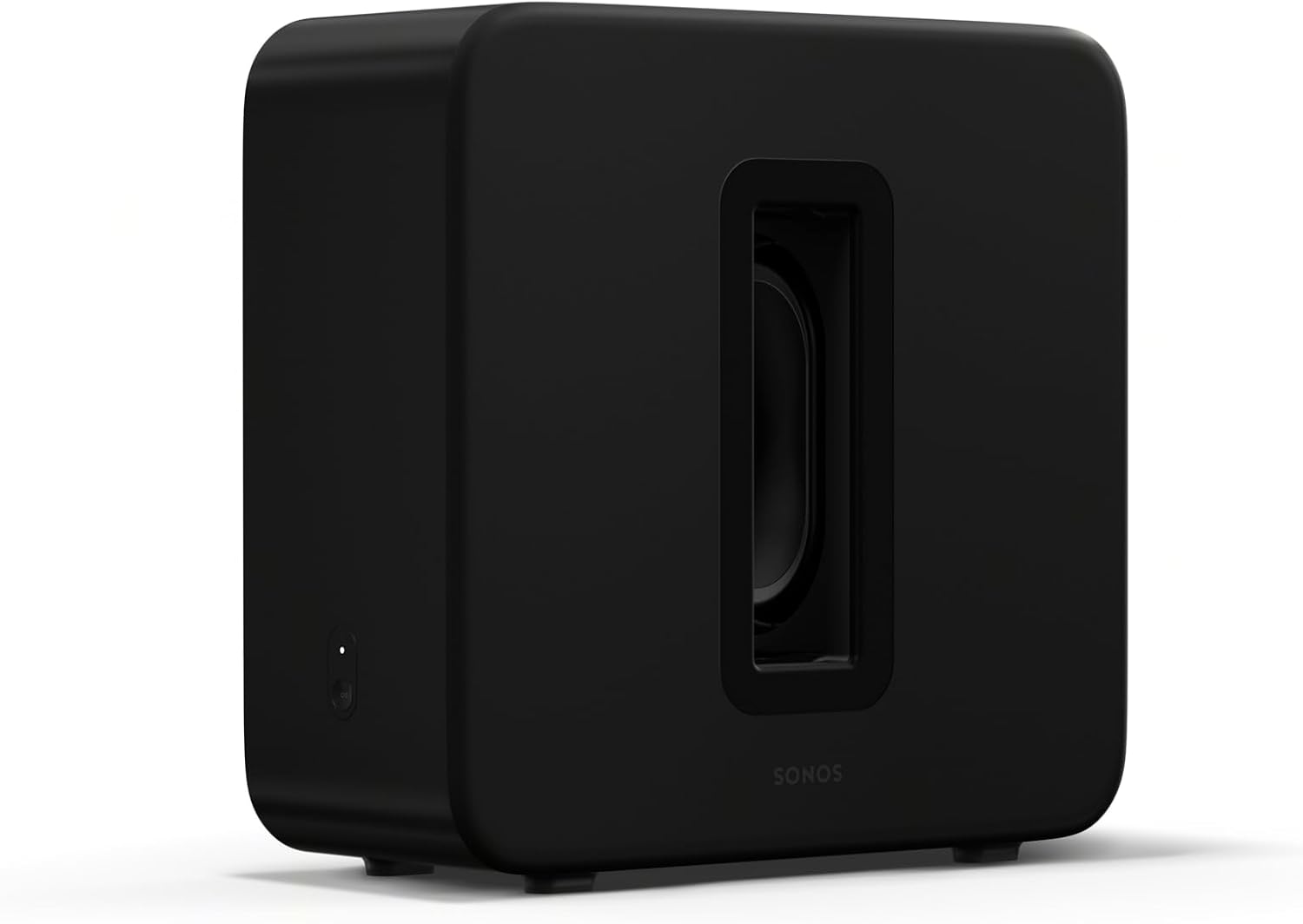
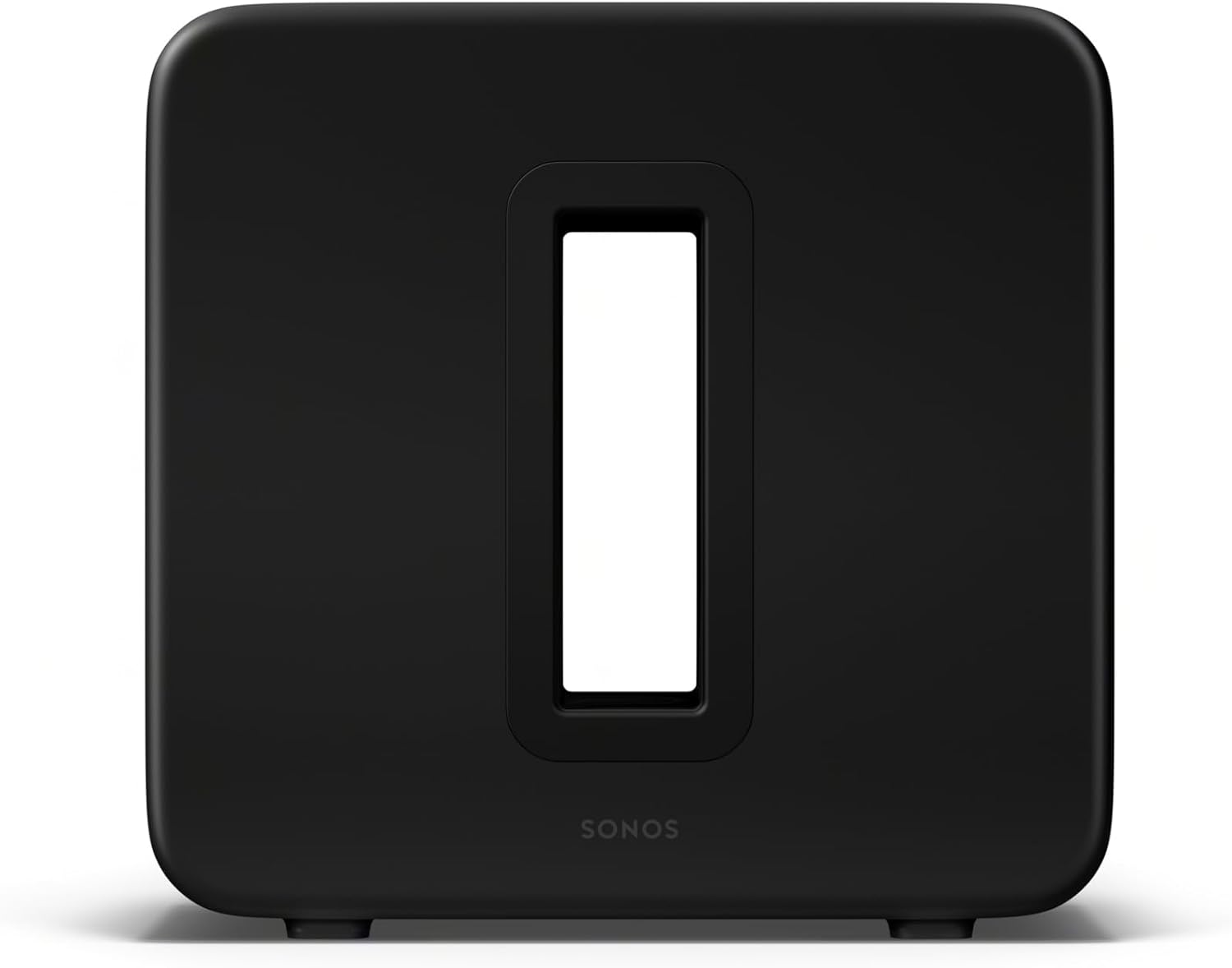
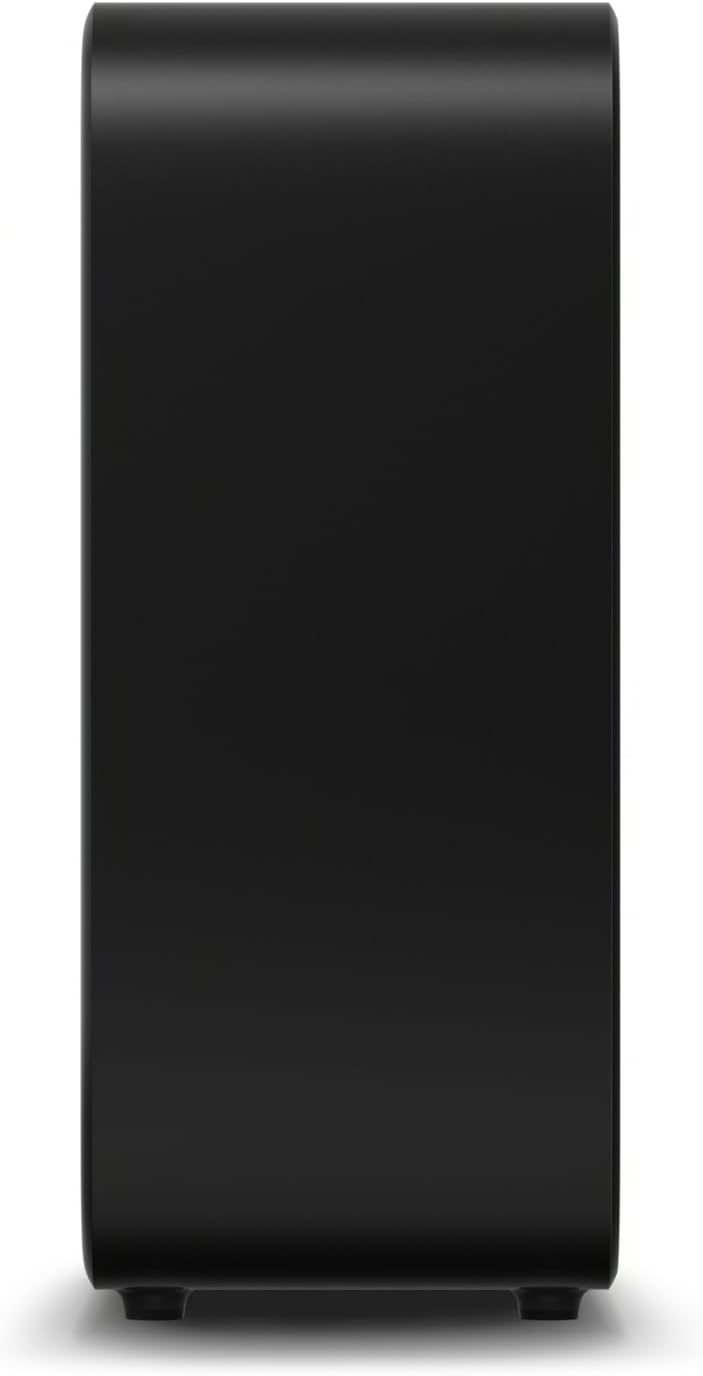
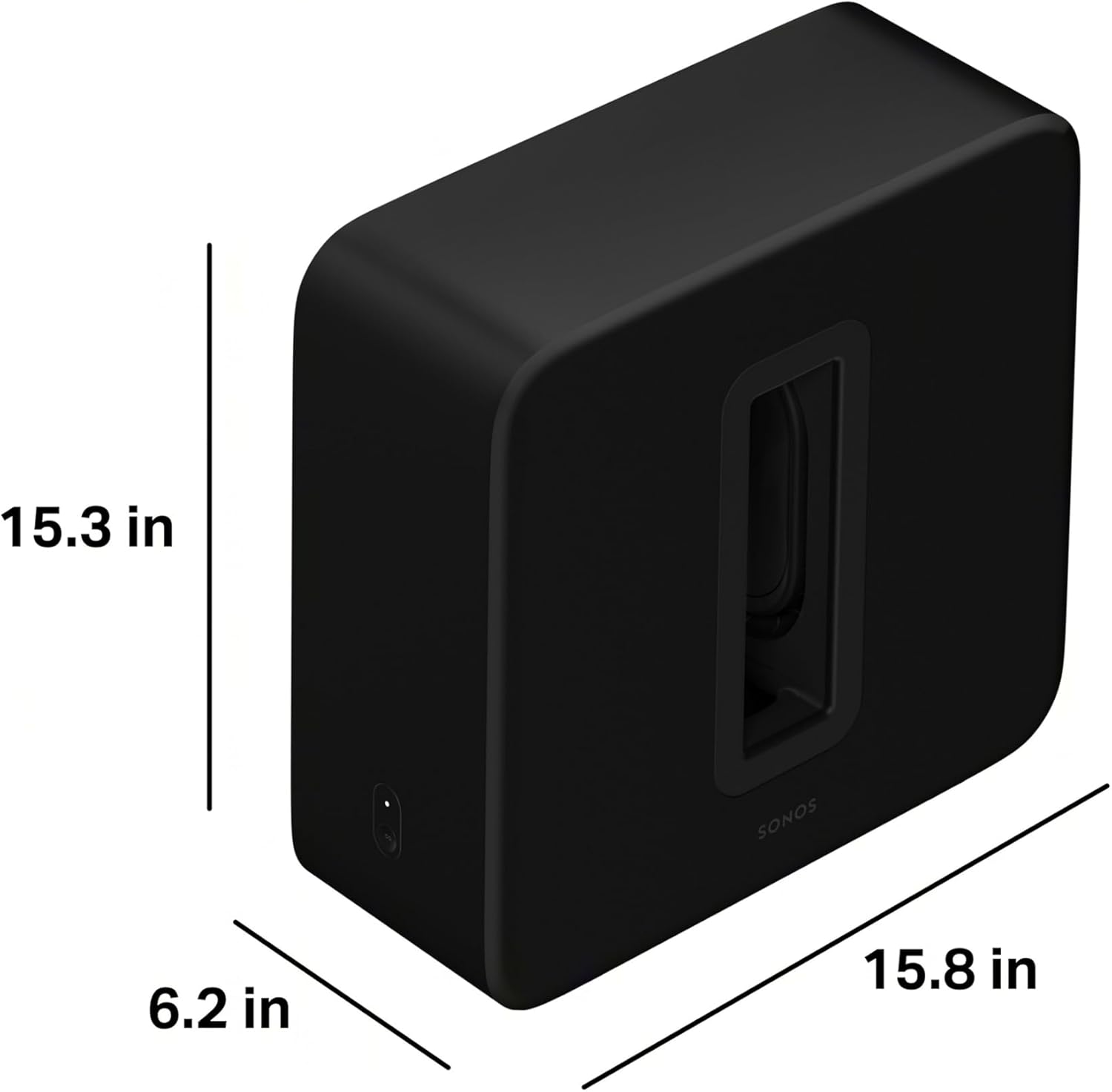
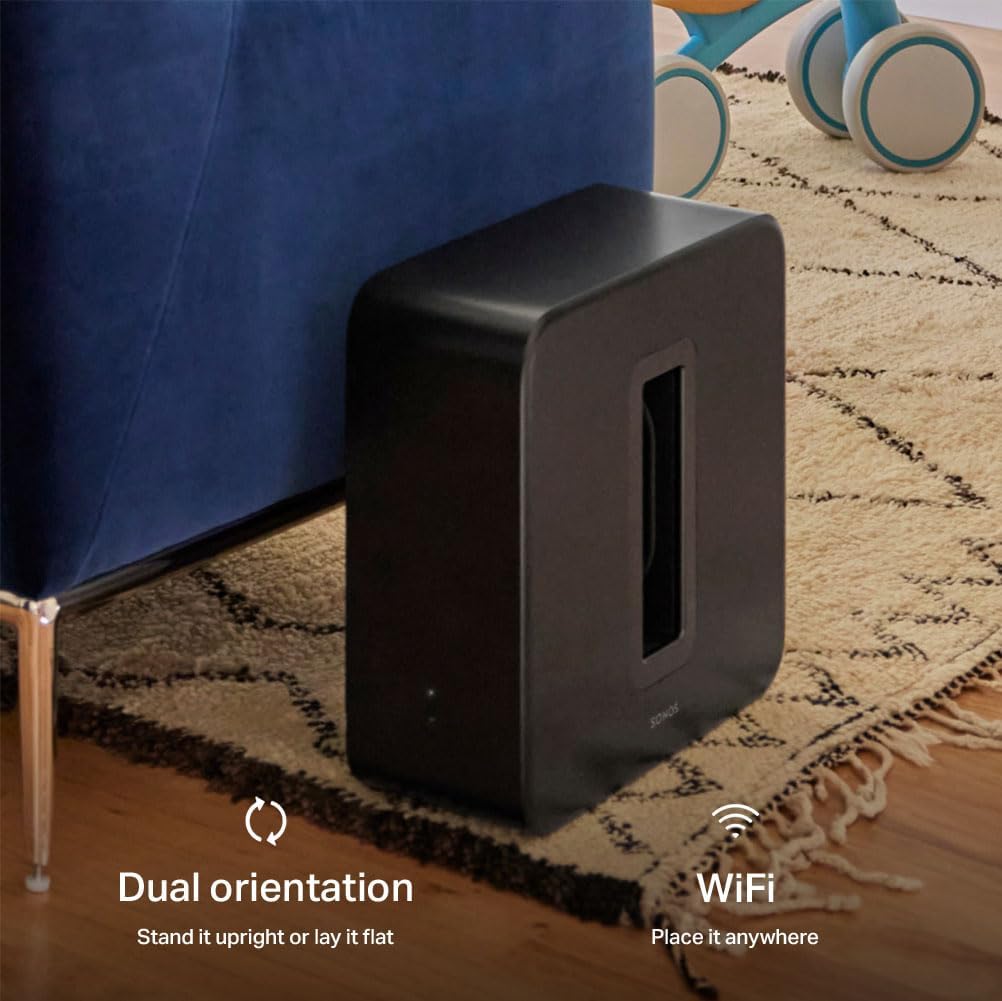
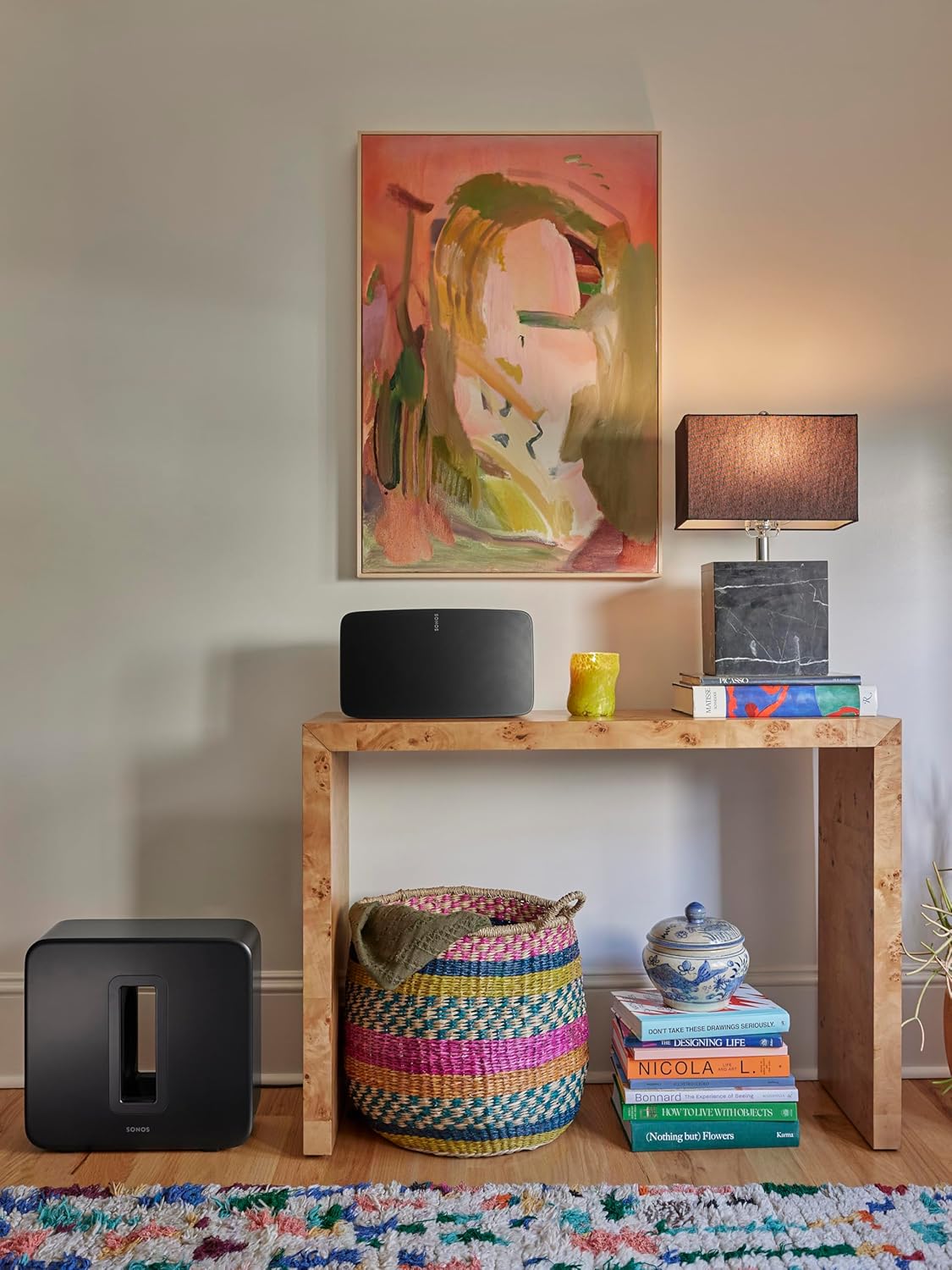
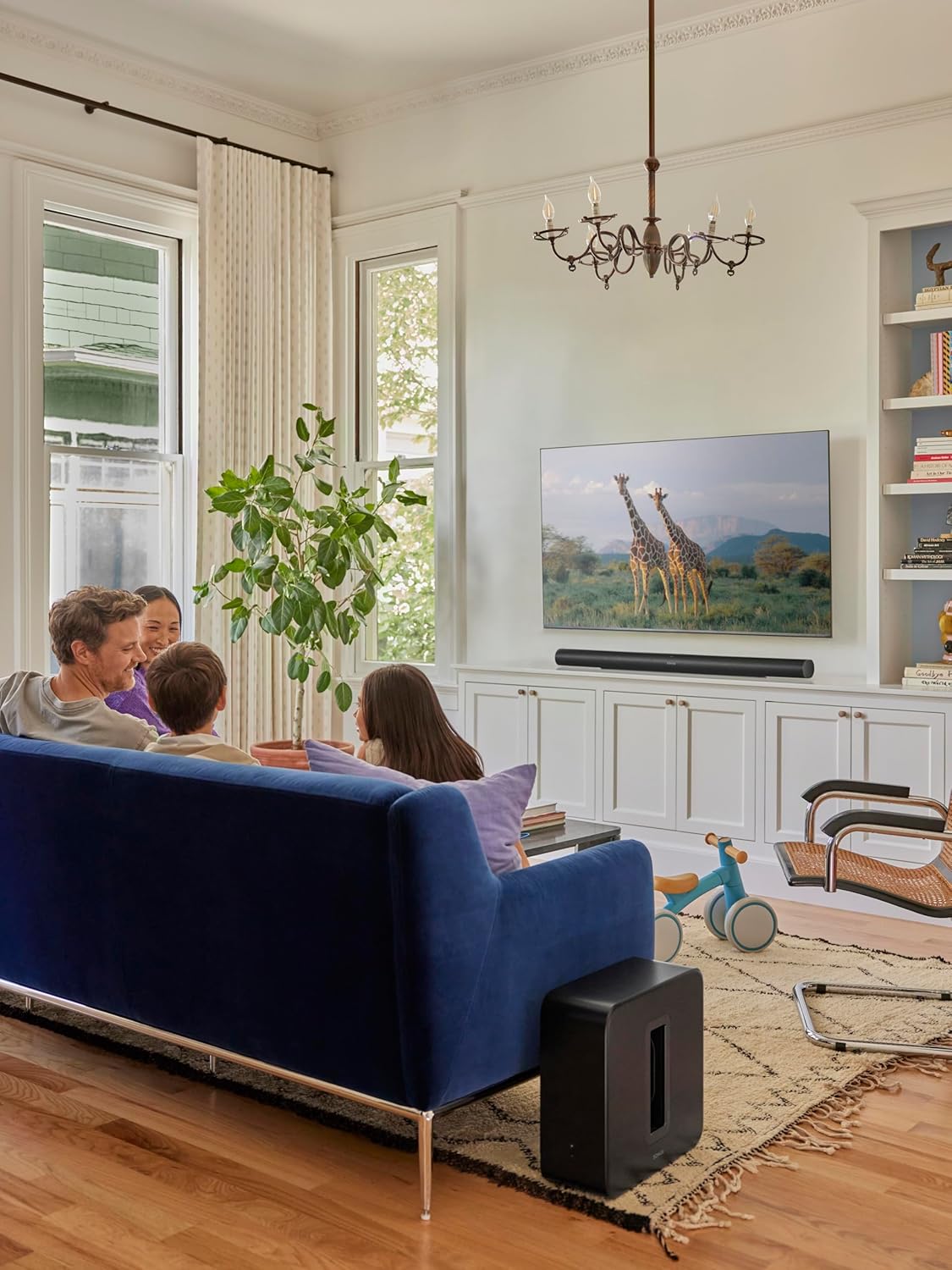
Price: $799.00 - $679.00
(as of Sep 05, 2025 03:09:13 UTC – Details)




